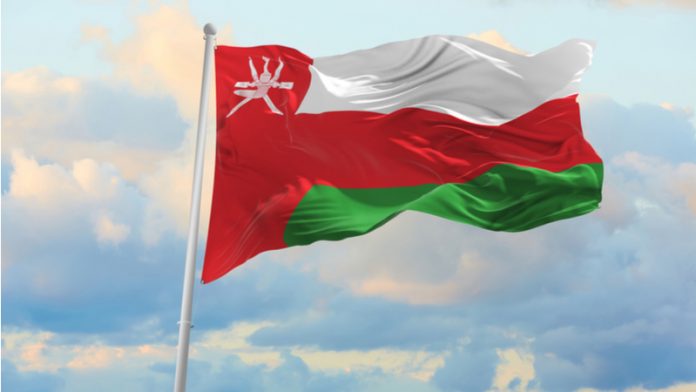Moody’s Investors Service (“Moody’s”) changed the outlook on the Government of Oman’s issuer rating to stable from negative and affirmed its long-term issuer and senior unsecured ratings at Ba3.
Moody’s also affirmed the Government of Oman’s (P)Ba3 senior unsecured medium-term note program rating.
The change of outlook to stable reflects the significant easing of government liquidity and external financing pressures, mainly as a result of significantly higher oil prices since the middle of 2020, and Moody’s expectation that oil prices will average above US$60/barrel during the next several years, increasing the likelihood that these pressures will remain contained.
In Moody’s baseline scenario, higher oil prices and ongoing implementation of the government’s medium-term fiscal adjustment program will also underpin a steady decline in the direct government debt burden to the pre-pandemic level, restoring some of the lost fiscal space before the next shock.
The affirmation of the Ba3 ratings reflects Moody’s view that, despite narrower fiscal and current account deficits in the next few years, Oman’s structural vulnerability to potential future declines in oil demand and prices will remain high, exposing the sovereign to reversals of the anticipated improvements in government debt and debt affordability metrics and to a sudden re-emergence of government liquidity and external vulnerability pressures.
The affirmation also takes into account Moody’s assessment that narrower fiscal deficits and significantly smaller government debt accumulation in the medium term will be partly offset by a simultaneous increase in government contingent liability risk due to higher borrowing in the broader public sector, mainly as a result of the shift of government spending related to oil and gas production from the budget to a newly-formed state-owned entity, Energy Development Oman (EDO).
Today’s rating action also applies to Oman Sovereign Sukuk S.A.O.C, a special-purpose vehicle domiciled in Oman, whose debt, in Moody’s view, is ultimately the obligation of the Government of Oman. The entity’s backed senior unsecured ratings and its backed senior unsecured medium-term note program rating was affirmed at Ba3 and (P)Ba3, respectively.
Oman’s local currency (LC) and foreign currency (FC) country ceilings remain unchanged. The LC country ceiling at Ba1, two notches above the sovereign issuer rating, incorporates a track record of high external imbalances and heavy reliance on a single revenue source, mitigated by predictable institutions and moderate political risk.
The FC country ceiling at Ba2, one notch below the LC ceiling, reflects relatively modest transfer and convertibility risks, notwithstanding Oman’s track record of weak fiscal policy effectiveness and its high level of external indebtedness.
Higher Oil Prices Reduce Government Liquidity And External Financing Pressures
The sharp rebound in global oil demand and prices since the middle of 2020 has led to a significant narrowing of Oman’s fiscal and current account deficits, substantially easing government liquidity and external financing pressures.
These pressures increased markedly during 2020 following the coronavirus shock, which led to a very large loss of Oman’s fiscal revenue and a simultaneous tightening of global financing conditions.
Moody’s estimates that higher oil prices will account for around half of the expected reduction in the fiscal deficit to less than 2 per cent of GDP in 2021 from 18 per cent of GDP in 2020.
Furthermore, based on Moody’s assumption that prices continue to average above US$60-65 per barrel in 2022-23, fiscal deficits will likely remain small in the medium term, underpinning a large and likely durable reduction in the government’s gross financing needs to less than 10 per cent of GDP per annum during 2021-23 from more than 22 per cent of GDP in 2020.
Similarly, Moody’s expects that Oman’s current account deficit will decline below 4 per cent of GDP in 2021-23 from more than 13 per cent of GDP in 2020. These lower fiscal and current account deficits will more than offset the increase in scheduled external government debt repayments, which will more than double to around 9 per cent of GDP on average during 2021-23 from less than 4 per cent of GDP in 2020.
The prospect of sharply lower borrowing needs and the improved outlook for Oman’s debt and debt affordability metrics have already facilitated a large decline in Oman’s sovereign credit spreads, which returned to the pre-coronavirus level of around 400 basis points earlier this year after more than doubling during 2020.
As a result, the government has been able to access the international capital markets several times since late October 2020, following an 18-month hiatus despite large borrowing needs.
Rating Balances Credit Supports And Reform Efforts Against Rising Contingent Liability Risks And Structural Vulnerabilities
A narrower fiscal deficit and a rebound in nominal GDP (more than a third of which is produced in the hydrocarbon sector and hence its value will rise with higher oil prices) will drive the reduction in the government’s direct debt burden to around 67 per cent of GDP in 2021 from nearly 80 per cent of GDP in 2020.
Moreover, in Moody’s baseline scenario, Oman’s debt burden could decline back to the pre-coronavirus level of around 60 per cent of GDP by 2024. This is based on the expectation that the government also implements majority of the key fiscal adjustment measures as planned under the National Program for Fiscal Balance (Tawazun), most notably by restraining nominal growth in non-interest expenditure by advancing the subsidy reform, controlling the wage bill and freezing budgetary capital spending, while also expanding its non-oil revenue streams, including by introducing a personal income tax on high-income earners.
However, aside from higher oil prices and the ongoing fiscal reforms, a significant portion of the expected decline in Oman’s fiscal deficit and its direct government debt burden over the medium term will result from the government’s decision, implemented from the start of 2021, to shift all spending responsibilities related to oil and gas production from the budget to a newly established government-owned holding company, EDO.
Government spending related to oil and gas production averaged US$4.8 billion during the past 5 years, contributing 6.5-7 per cent of GDP on average to the fiscal deficit. EDO has been mandated by the government, which appoints its Board of Directors, to cover this spending from a combination of borrowing, improvements in spending efficiency, and new growth.
Notwithstanding targeted spending efficiency gains, Moody’s expects considerable EDO borrowing over the next four years. This will drive most of the increase in the other non-financial public sector debt burden to more than 60 per cent of GDP from around 40 per cent of GDP in 2020, increasing the government’s contingent liability risks and the amount of public sector debt supported by income from the government’s oil and gas assets. In Moody’s view this will offset a portion of the expected improvement in the government’s debt and debt affordability metrics over the medium term.
Exposure To Declines In Oil Prices And Global Carbon Transition Will Remain High
Oman will remain heavily exposed to declines in oil demand and prices. Moody’s estimates that in 2021 the hydrocarbon sector will account for around 40 per cent of GDP, around 73 per cent of government revenue (equivalent to around 25 per cent of GDP), and 64 per cent of total exports of goods and services.
This reliance is further exacerbated by Oman’s high fiscal and external breakeven oil prices, which we estimate at around US$71/barrel (for both) in 2021. Although lower than US$92/barrel and US$82/barrel, respectively, in 2018, breakeven oil prices will likely remain at the higher end of Moody’s medium-term oil price projection range of US$50-70/barrel.
As a result, Oman’s fiscal and external accounts will remain exposed to the risk of a sudden and potentially very large fiscal deterioration and re-emergence of liquidity and external financing pressures whenever global oil demand and prices decline significantly, as they did in 2020 or in 2015.
Over time, Oman’s heavy reliance on the oil and gas sector and high sensitivity of its fiscal and external sector metrics to oil price fluctuations underpin the sovereign’s very highly negative exposure to carbon transition.
Without a transformation of Oman’s economy and government revenue base, the shift towards lower reliance on hydrocarbons over the next several decades and, eventually, net-zero targets for a large part of the world would put significant downward pressure on Oman’s credit profile.
In the near to medium term, Oman’s financing conditions are likely to be increasingly shaped by prospects that such a transformation is underway and investors’ assessment of Oman’s capacity to respond to carbon transition.
Balancing these structural vulnerabilities, Oman’s Ba3 ratings remain supported by the sovereign’s high per-capita income, which is more than twice the Ba3-rated median in PPP-adjusted terms and supports the sovereign’s shock absorption capacity.
The ratings are also supported by the availability of liquid sovereign wealth fund assets, which could (and have been) used to relieve government liquidity pressures. The foreign-currency portion of these assets was US$13.8 billion (21.4 per cent of GDP) at the end of 2020, only slightly lower than US$14.5 billion before the pandemic. These assets include US$12.3 billion managed by the Oman Investment Authority (OIA) and US$1.5 billion managed by the Central Bank of Oman in Petroleum Reserve Fund.
Liquid foreign-currency assets were US$12.3 billion in July 2021, a decline since the end of 2020, which was mainly due to the transfer of OIA dividends to the budget.
GDP per capita (PPP basis, US$): 30,178 (2020 Actual) (also known as Per Capita Income)
Real GDP growth (% change): -2.8% (2020 Actual) (also known as GDP Growth)
Inflation Rate (CPI, % change Dec/Dec): -1.4% (2020 Actual)
Gen. Gov. Financial Balance/GDP: -18.1% (2020 Actual) (also known as Fiscal Balance)
Current Account Balance/GDP: -13.4% (2020 Actual) (also known as External Balance)
External debt/GDP: [not available]
Economic resiliency: baa3
Default history: No default events (on bonds or loans) have been recorded since 1983.
Report originally published by Moody’s
With inputs from ONA, Alvin Thomas, and Swathi Suresh






